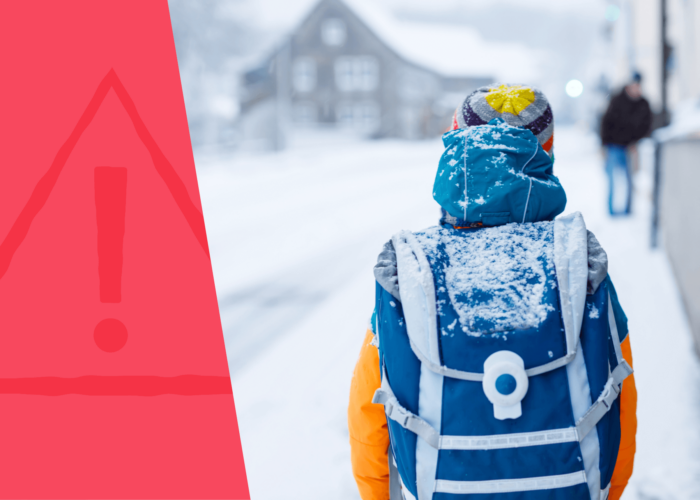Exercising in the cold

Whilst a lot of us will be keeping our lessons indoors over the coming days, sometimes exercising in the cold is simply unavoidable. Here are some top tips from The PE Hub for keeping everyone safe and happy during chilly PE lessons.
Check the surface
If your activities are taking place on a hard surface then check the area for any icy or slippery patches beforehand, or alternatively, on a grass surface check to see if the ground has frozen solid. If any of this is the case, amend the size/location of your activity area and the intensity of the session accordingly. Also make sure that everyone has appropriate footwear.
Layer up!
A pretty obvious one but no less important. Make sure that your learners are layered up and protect their extremities with hats and gloves. Always keep an eye out for the first signs of hypothermia, which include shivering, loss of motor skills and numbness.
Don’t just dress warm, dress dry
The fastest way to lose body heat is through wet clothes, whether that’s through sweat or moisture from the climate. Keep an eye out for your pupils wearing fabrics such as cotton, which can sap warmth when wet, and urge them to wear synthetic fibres like polyester or nylon if possible.
A good, dynamic warmup is key
A good warm up increases your heart rate and therefore your blood flow, this enables more oxygen to reach your muscles, raising body temperature and reducing the chance of injury. Warm ups are always important, but in cold weather they are absolutely crucial!
Remove layers once warm
Once your learners are feeling warm, you can urge them to take their top layers so they don’t overheat. If you get too sweaty when exercising in freezing temperatures then you are at far greater risk of dehydration and hypothermia. Keep the layer dry once it’s been taken off and it can always be put back on later.
Keep everyone hydrated
You are just at just as much risk of dehydration when exercising during cold weather as you are during hot weather, with your body working overtime to regulate its temperature. Even though children won’t feel as thirsty, it’s important that there are plenty of breaks and everyone is encouraged to drink water.
Have a backup plan
If it’s really too cold, or conditions get worse whilst you’re outside, sometimes it’s just better to call it a day! Don’t be afraid to make that decision, and always have a contingency plan in place to make sure that your group still has a good session of activities indoors.
Thanks for taking the time to read through our tips, we hope that you and your groups are able to have enjoyable outdoor lessons in the cold, although we do hope it warms up again soon!

